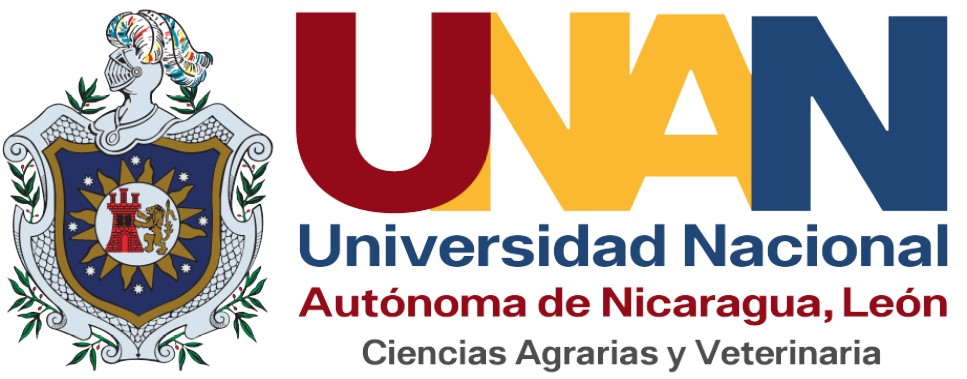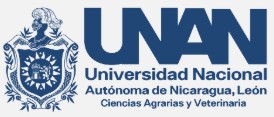Economic effects of the Covid-19 pandemic on household vegetable consumption in the city of Cúcuta, Colombia
DOI:
https://doi.org/10.5377/ribcc.v7i14.12946Keywords:
Agri-food system, Covid-19, Food security, Supply, DemandAbstract
The Covid-19 pandemic has affected the agrifood system of the country, in its productive chains from the supply, marketing and consumption of food in households. Within this ontological framework, the research project "Impacts of the Covid-19 pandemic in the agrifood security of the department of Norte de Santander 2020-2021" is being developed, obtaining partial results on the effects of the pandemic in the consumption of vegetables in the homes of the city of Cúcuta, capital of the department. Databases of CENABASTOS and MINAGRICULTURA (2019-2020) and heads of families were consulted through an online survey of 323 households of members of the community of the University of Santander (UDES) in the period January-July 2021 on variations in the quantity, quality, price and frequency of consumption of the main vegetables produced in the department (potato, tomato, paprika, onion and garlic). Results indicate that when comparing the prices of the years 2019 (before the pandemic) and 2021 (third peak of the pandemic), price increases of potato by 97.90%, tomato by 2.39%, white onion by 105.02%, garlic by 23.79% and carrot by 2.53% are evidenced. In the surveys, the perception of the heads of household indicates that the quantity of vegetables consumed has been affected by 42.48%, quality by 37.08%, prices by 49.59% and frequency by 33.08%.
Downloads
Metrics
References
AGRONET-MINAGRICULTURA (2021). Estadísticas agropecuarias. Recuperado de https://www.agronet.gov.co/estadistica/Paginas/home.aspx
Bailón-Zambrano, M. (2020). Oferta de productos locales para efectividad comercial. Revista Científica Arbitrada de Investigación en Comunicación, Marketing y Empresa REICOMUNICAR, v. 3, nº 6, p. 2-20. DOI: https://doi.org/10.46296/rc.v3i6.0013
Bellacomo, C.; Berriolo, M.J., Caracotche. M. ., Castagnino, A., Cendón, M., Díaz, K., Fasciglione. G., González Ferrín, M., Mairosser, A., Martinoia, G., Rogers, W., Rosini, M., Villagra, C., Yommi, A., Zazzetta, M.,L. (2020). Panorama of intensive plant production of healthy foods - "Proalim Km 0", in times of pandemic by Covid-19. Part 2 - Preferences of the production, agribusiness, commercialization and consumption of diversity of vegetables. Horticultura Argentina, v.9, n° 100, pp. 357- 397.
Berges, M., Lupín, B., Rodríguez, J., Ariza, M., Mujica, G., Roldán, C., Pérez, G.,, Brillanti, C., Menéndez, L., Cutrera, G., y Agullo, A. (2020). Tendencias del consumo de alimentos durante la pandemia en el Municipio de General Pueyrredon. Póster presentado en Jornadas INVESTIGAR UNMDP-2020, Mar del Plata [ARG], 19-30 octubre 2020
Castagnino, A., Diaz, K., Rosini, M., García, F., Di Martino, B., Amendolara, P., Mariejhara, A., Bastien, E., Bosisio, M. & Ferraris, C. (2020). Trends in regional consumption in times of Covid-19 pandemic. Horticultura Argentina v. 39, nº 99, p. 43 – 75.
Bilal, C. & Senol, D. (2020). The effects of COVID-19 Pandemic Outbreak on Food Consumption Preferences and Their Causes, J Res Med Dent Sci, v. 8, nº 3, p. 169-173.
Butu, A., Brumă, I., Tanasă, L., Rodino, S., Vasiliu, C., Sebastian Doboș, S. & Butu, M. (2020). The Impact of COVID-19 Crisis upon the Consumer Buying Behavior of Fresh Vegetables Directly from Local Producers. Case Study: The Quarantined Area of Suceava County, Romania, International Journal of Environmental Research and Public Health, v. 17, nº. 15, 5485. DOI: https://doi.org/10.3390/ijerph17155485
Centro de Análisis y Difusión de la Economía Paraguaya (CADEP). (2020). Agricultura Familiar, ODS y Recuperación Económica post pandemia. Disponible en: http://www.soberaniaalimentaria.org.py/wp-content/uploads/2020/10/Agricultura-Familiar-ODS-1.pdf
Carvalho, D. et al. (2021). The COVID-19 pandemic and changes in the lifestyles of Brazilian adolescents, Rev. bras. Epidemiol. 24: E210012. DOI: https://doi.org/10.1590/1980-549720210012
Departamento Administrativo Nacional de Estadística (DANE). (2019). Mercado laboral por departamentos. Recuperado de https://www.dane.gov.co/index.php/estadisticas-por-tema/mercado-laboral/mercado-laboral-por-departamentos
Diario Frontera (24-12-2019). En Norte de Santander hay 183.215 venezolanos a octubre. Recuperado de https://www.laopinion.com.co/frontera/en-norte-de-santander-hay-183215-venezolanos-octubre-189265
Diario La Opinión (11-10-2019). Cúcuta sigue líder en informalidad laboral con 73,3%. Recuperado de https://www.laopinion.com.co/economia/cucuta-sigue-lider-en-informalidad-laboral-con-733-185241#OP
Diario La Opinión (26-11-2019). Mercado laboral, el gran reto para la competitividad de Norte de Santander. Recuperado de https://www.laopinion.com.co/economia/mercado-laboral-el-gran-reto-para-la-competitividad-de-norte-de-santander-187712
Grant, F., Scalvedi, M., Scognamiglio, U., Turrini, A. & Rossi, L. (2021). Eating Habits during the COVID-19 Lockdown in Italy: The Nutritional and Lifestyle Side Effects of the Pandemic, Nutrients v. 13, nº. 7, 2279. DOI: https://doi.org/10.3390/nu13072279
Gobernación del departamento Norte de Santander (2016). Plan de Desarrollo para Norte de Santander 2016-2019. “Un Norte Productivo Para Todos". Recuperado de http://www.sednortedesantander.gov.co/sitio/images/documentos/informesdelsector/PDD%20NDS%202016-2019.pdf
González, C. (2011). Comparisons of LSMS-ISA data collection and dissemination efforts in Central America. Journal of development and Agricultural Economics, v, 3, n° 8, pp. 353-361.
Gutiérrez, M., Suarez, M. y Villalba, A. (2021). Producir y comercializar en pandemia: estrategias emergentes de los agricultores familiares en Santiago del Estero durante 2020. Trabajo y sociedad, v. 22, nº. 37, p. 13-30. Disponible en: https://www.redalyc.org/journal/3873/387368391002/html/
Hernández, R., Fernández, C. y Baptista, P. (2014). Metodología de la Investigación, Editorial MC Graw Hill, Quinta Edición, México
Jayawardena, R. & Misra, A. (2020). Balanced diet is a major casualty in COVID-19. Diabetes & metabolic syndrome, v. 4, nº 5, p. 1085–1086. DOI: https://doi.org/10.1016/j.dsx.2020.07.001
Martínez, A., Aguilera, C., Hernández, J., Ruiz, J. y Mireles, A. (2021). Percepción e impacto del COVID 19 en el sector agroalimentario del estado de Guanajuato, Jóvenes en la ciencia, v. 10, p. 1-9. Disponible en: https://www.jovenesenlaciencia.ugto.mx/index.php/jovenesenlaciencia/article/view/3374/2874
Ministerio de Agricultura y Desarrollo Rural (MINAGRICULTURA). (2019). Evaluaciones estadísticas agropecuarias (EVA). Recuperado de https://www.upra.gov.co/web/guest/evaluaciones-agropecuarias-municipales-eva
Mogues, T. (2020). Los mercados de alimentos durante la COVID-19, IMF, Fiscal Affairs, Disponible: file:///D:/Documents/OTROS%20ARCHIVOS/sp-special-series-on-covid-19-food-markets-during-covid-19.PDF
Moreb, N., Ahmed, A., Swarna, J. & Amit J. (2021). Fruits and Vegetables in the Management of Underlying Conditions for COVID-19 High-Risk Groups, Foods v. 10, nº. 2, 389. DOI: https://doi.org/10.3390/foods10020389
Núñez, J. y Carvajal, J. (2014). Los perfiles tecnológicos del comercio rural nortesantandereano: un análisis del potencial competitivo de los principales rubros agropecuarios, informe final de Proyecto de investigación, Universidad de Santander, Cúcuta.
Núñez, J., Carvajal, J., Carrero, D., Mendoza, O. (2018). Indicadores del impacto del cambio climático en la agricultura familiar andina colombiana, Revista Iberoamericana de Bioeconomía y Cambio Climático, v. 4, nº 7, p. 824-833. DOI: https://doi.org/10.5377/ribcc.v4i7.6309
Ordinola, M. y Devaux, A. (2021). Desafíos y oportunidades para el sector papa en la zona andina en el contexto de la COVID-19. Revista Latinoamericana de la Papa, v. 25, nº 1, p. 102-124. DOI: https://doi.org/10.37066/ralap.v25i1.422
Organización de las Naciones Unidas para la Agricultura y la Alimentación (FAO). (2020). Nueva enfermedad por coronavirus (COVID-19). Recuperado de http://www.fao.org/2019-ncov/es/
Organización Mundial del Comercio (OMC). (2020). COVID-19 y comercio mundial. Recuperado de https://www.wto.org/spanish/tratop_s/covid19_s/covid19_s.htm
Peng, J., Liang, L., Xiaofen, X., Changzheng, Y., Hui, C., Bing, G., Junmin, Z. & Shujuan, Y. (2021). Changes in dietary patterns among youths in China during COVID-19 epidemic: The COVID-19 impact on lifestyle change survey (COINLICS). Appetite, v. 158, 105015. DOI: https://doi.org/10.1016/j.appet.2020.105015
Pérez-Rodrigo, C. et al. (2020). Cambios en los hábitos alimentarios durante el periodo de confinamiento por la pandemia COVID-19 en España, Rev Esp Nutr Comunitaria, v. 26, nº 2), p.101-111. DOI:10.14642/RENC.2020.26.2.5213
Poveda, C., Peré, G., Jouvín, J., Celi, M. y Yaguachi, R (2021). Prácticas alimentarias y estilos de vida en la población de Guayaquil durante la pandemia por Covid-19. Nutrición Clínica Y Dietética Hospitalaria, V. 41, Nº 3. DOI: https://doi.org/10.12873/413poveda
Programa de Naciones Unidas para el Desarrollo (PNUD). (2019). Norte de Santander: retos y desafíos por el Desarrollo Sostenible. Recuperado de https://www.undp.org/content/dam/colombia/docs/Gobernabilidad/Publicacionesproyectos/UNDP_Co_GOB_Publicaciones_FICHA%20NORTE%20DE%20SANT%20-%20RETOS%20Y%20DESAF%C3%8DOS%20PARA%20EL%20DESARROLLO.pdf
Programa Especial para la Seguridad Alimentaria (PESA). (2011). Seguridad Alimentaria y Nutricional. Conceptos Básicos. Centroamérica, Proyecto Food Facility Honduras. Recuperado de http://www.fao.org/3/a-at772s.pdf
Programa Mundial de Alimentos (PMA). (2008). La vulnerabilidad alimentaria de hogares desplazados y no desplazados: un estudio de caso en ocho departamentos de Colombia. https://www.acnur.org/fileadmin/Documentos/Publicaciones/2008/6821.pdf
Programa Mundial de Alimentos (PMA). (2020). La pandemia por COVID-19. Recuperado de https://es.wfp.org/emergencias/pandemia-covid-19
Centro Latinoamericano para el Desarrollo Rural (RIMISP). (2021). Evolución del costo de los alimentos ante el COVID-19, Análisis de Coyuntura covid-19 en América Latina, Análisis n°15. Disponible en: https://opendocs.ids.ac.uk/opendocs/handle/20.500.12413/16650
Sanabria-Velázquez, A., Enciso-Maldonado, G. y Maidana, M. (2020). Medidas para minimizar los efectos del SARs-CoV-2 en la horticultura paraguaya. Actualidad del Campo Agropecuario, nota técnica. Disponible: https://www.researchgate.net/publication/341273915_Medidas_para_minimizar_los_efectos_del_SARs-CoV-2_en_la_horticultura_paraguaya
Scarmozzino, F. & Visioli, F. (2020). Covid-19 and the Subsequent Lockdown Modified Dietary Habits of Almost Half the Population in an Italian Sample, Foods, v. 9, nº. 5, 675. DOI: https://doi.org/10.3390/foods9050675
Tikitakas (2020). Cuarentena total en Colombia: qué es, cuándo empieza y cuándo acaba. Recuperado de https://colombia.as.com/colombia/2020/05/20/tikitakas/1589996857_168861.html
Universidad Nacional de Rosario (2021). Informe semestral Canasta Básica Alimentaria. Ciudad de Rosario. Segundo semestre de 2020. Disponible en: http://rephip.unr.edu.ar/bitstream/handle/2133/19564/Informe%20Semestral%20CBA%202021-01.pdf?sequence=3&isAllowed=y
Downloads
Published
How to Cite
License
Copyright (c) 2021 Ibero-american JournalL of Bioeconomy and Climate Change e-ISSN 2410-7980

This work is licensed under a Creative Commons Attribution-NonCommercial-ShareAlike 4.0 International License.
Copyright © 2025 Rev. iberoam. bioecon. climate change. National Autonomous University of Nicaragua León (UNAN-León), Knowledge Area of Agrarian and Veterinary Sciences / Specific Area of Agroecology and Agribusiness / Center for Research in Agrarian Sciencies. Academic Directorate. Research Department. Publication and scientific events Unit.












 EDITORIAL
EDITORIAL e-ISSN
e-ISSN


 COPYRIGHT
COPYRIGHT This work is licensed under a Licencia Internacional
This work is licensed under a Licencia Internacional 












